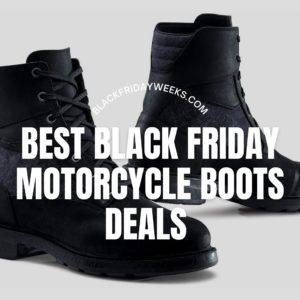Insoles for work boots are removable footbeds designed to provide additional support, cushioning, and comfort to enhance the overall performance and well-being of individuals who wear work boots for extended periods. These insoles are inserted into the footwear, replacing or supplementing the existing insoles, and they serve various purposes based on the wearer’s needs and the demands of their work environment.
Key features and benefits of insoles for work boots include:
- Arch Support: Many insoles are designed to provide proper arch support, helping to reduce foot fatigue and discomfort during long hours of wear.
- Cushioning: Insoles with added cushioning provide extra shock absorption, reducing the impact on the feet and joints. This is especially beneficial for individuals working on hard surfaces.
- Moisture Management: Some insoles incorporate moisture-wicking materials to keep the feet dry and comfortable, preventing sweat and odor buildup.
- Orthopedic Support: Specialized orthopedic insoles are available to address specific foot conditions, such as plantar fasciitis, overpronation, or other issues that may cause discomfort.
- Temperature Regulation: Certain insoles feature materials that help regulate temperature, keeping the feet cool in hot conditions or providing warmth in colder environments.
- Anti-Fatigue Properties: Insoles designed to reduce fatigue often include features like gel inserts or memory foam, providing extra comfort during prolonged periods of standing or walking.
- Customization: Some insoles can be customized or trimmed to fit the specific shape and size of the wearer’s feet, offering a personalized and secure fit.
- Impact Resistance: Insoles with shock-absorbing properties help minimize the impact of each step, reducing stress on the feet and lower limbs.
Insoles for work boots are available in various materials, designs, and thicknesses to cater to different preferences and foot conditions. Whether seeking additional comfort, support, or relief from specific foot issues, choosing the right insoles can significantly enhance the overall comfort and performance of work boots.
What type of insoles are best for work boots?
The best type of insoles for work boots depends on individual preferences, foot conditions, and the specific requirements of the work environment. Different types of insoles offer various features to address comfort, support, and specific foot-related issues. Here are some common types of insoles and their benefits:
- Arch Support Insoles:
- Benefits: Provide additional support to the arch of the foot, reducing strain and fatigue. Ideal for individuals with flat feet or those who need extra arch support.
- Cushioned or Gel Insoles:
- Benefits: Offer extra padding and shock absorption, reducing impact on the feet and joints. Suitable for individuals working on hard surfaces or standing for extended periods.
- Orthotic Insoles:
- Benefits: Designed to address specific foot conditions, such as plantar fasciitis, overpronation, or high arches. Provide targeted support to alleviate discomfort and promote proper foot alignment.
- Anti-Fatigue Insoles:
- Benefits: Feature materials like memory foam or gel to reduce fatigue during prolonged periods of standing or walking. Provide enhanced comfort and shock absorption.
- Moisture-Wicking Insoles:
- Benefits: Made from breathable materials that wick away moisture, keeping the feet dry and reducing the risk of odors. Suitable for individuals working in hot or humid conditions.
- Heated Insoles:
- Benefits: Include heating elements to keep the feet warm in cold environments. Ideal for those working in outdoor or winter conditions.
- Dual-Layer Insoles:
- Benefits: Combine features such as arch support, cushioning, and moisture-wicking capabilities. Provide comprehensive support for overall foot comfort.
- Work-Specific Insoles:
- Benefits: Some brands offer insoles specifically designed for certain occupations or work conditions. These may include added durability, protection, or safety features.
When choosing insoles for work boots, it’s essential to consider personal comfort preferences, any existing foot issues, and the demands of the work environment. Trying different types of insoles and selecting those that address specific needs can significantly enhance the overall comfort and performance of work boots. Additionally, insoles should fit well within the boots without causing crowding or discomfort.
What is the difference between inserts and insoles?
The terms “inserts” and “insoles” are often used interchangeably, but they can refer to slightly different things depending on context. However, in general usage, they are often used synonymously. Here’s a breakdown of the typical distinctions:
- Insoles:
- Definition: Insoles are the removable footbeds inside a shoe that provide additional cushioning, support, and comfort. They are designed to be placed inside the shoe and can be easily taken out or replaced.
- Purpose: Insoles enhance the overall fit of the shoe, offer arch support, and may provide additional features such as shock absorption, moisture-wicking, or targeted support for specific foot conditions.
- Usage: Insoles are commonly used to customize the comfort of shoes, address foot-related issues, or simply enhance the feel of footwear.
- Inserts:
- Definition: Inserts are a broader term that can refer to any additional item or material added to a shoe for various purposes. Inserts can include insoles, heel lifts, arch supports, or any other material inserted into the shoe to modify its characteristics.
- Purpose: Inserts can serve different functions, such as correcting gait issues, providing additional arch support, altering the height or angle of the foot, or addressing specific foot conditions.
- Usage: While insoles are a type of insert, not all inserts are strictly insoles. Inserts encompass a wider range of modifications or additions made to footwear.
In summary, while “insoles” specifically refer to the removable footbeds inside shoes, “inserts” is a more general term that can include a variety of additions or modifications made to footwear for different purposes. In everyday language, people often use these terms interchangeably when discussing products designed to improve comfort or address specific foot concerns.
How long do insoles last in work boots?
The lifespan of insoles in work boots can vary depending on factors such as the quality of the insoles, the frequency and intensity of use, the wearer’s weight, and the conditions of the work environment. On average, insoles in work boots may last anywhere from a few months to a year or more. Here are some factors that can influence the longevity of insoles:
- Quality: High-quality insoles made from durable materials tend to last longer. Consider investing in well-constructed insoles with features that suit your specific needs.
- Frequency of Use: Insoles in work boots worn daily or for extended hours may wear out more quickly than those used occasionally. Heavy use can compress the materials and reduce their effectiveness over time.
- Intensity of Work: Individuals engaged in physically demanding jobs, especially those involving heavy lifting or constant movement, may experience quicker wear and tear on their insoles.
- Body Weight: Heavier individuals may experience faster degradation of insoles due to increased pressure on the footbed. Choosing insoles designed to support higher weight loads can help extend their lifespan.
- Work Environment: Harsh or abrasive work environments, exposure to moisture, and extreme temperatures can contribute to the deterioration of insoles. Moisture-wicking and antimicrobial features can help mitigate some of these effects.
- Maintenance: Regular cleaning and proper care of insoles can extend their lifespan. Removing and airing out insoles after use, as well as keeping them dry, can prevent the growth of bacteria and maintain their effectiveness.
- Foot Conditions: Insoles designed to address specific foot conditions or orthopedic needs may require replacement more frequently if the condition changes or worsens.
It’s essential to pay attention to signs of wear and tear, such as flattened or compressed cushioning, loss of support, or a noticeable decrease in comfort. When insoles no longer provide adequate support or show signs of deterioration, it’s time to consider replacing them to maintain foot comfort and overall well-being. Regularly inspecting and, if necessary, replacing insoles is a proactive measure to ensure that work boots continue to provide the necessary support and comfort.
How to find the best insoles for work boots
Finding the best insoles for work boots involves considering your specific needs, foot characteristics, and the demands of your work environment. Here are steps to help you find the most suitable insoles:
- Identify Your Foot Type:
- Determine whether you have high arches, low arches, or neutral arches. This information will guide you in selecting insoles with the right level of arch support.
- Consider Your Work Environment:
- Assess the conditions of your work environment. If you work on hard surfaces or in extreme temperatures, choose insoles with appropriate features such as extra cushioning or insulation.
- Understand Your Foot Condition:
- If you have specific foot conditions like plantar fasciitis, overpronation, or flat feet, look for insoles designed to address these issues. Orthotic insoles or those with targeted support can be beneficial.
- Determine the Level of Cushioning Needed:
- Consider the level of cushioning you prefer. Some individuals prefer extra padding for shock absorption, while others may prefer a firmer feel. Gel, memory foam, and EVA foam are common cushioning materials.
- Check for Moisture-Wicking Properties:
- If you work in conditions where your feet may sweat, choose insoles with moisture-wicking properties to keep your feet dry and prevent odors.
- Look for Odor Control Features:
- Insoles with antimicrobial or odor-controlling properties can help keep your work boots fresh, especially if you work in environments where odor may be a concern.
- Consider Customization Options:
- Some insoles are designed to be trimmed or customized to fit your specific shoe size and shape. This can ensure a snug and comfortable fit within your work boots.
- Read Reviews and Ratings:
- Look for customer reviews and ratings of different insoles. This can provide insights into the experiences of others with similar needs and preferences.
- Try Different Brands and Models:
- Insoles can vary significantly between brands and models. If possible, try different options to determine which ones feel the most comfortable and supportive for your feet.
- Consult with a Podiatrist:
- If you have specific foot concerns or conditions, consider consulting with a podiatrist. They can provide personalized recommendations based on your individual foot health.
Remember that finding the best insoles may involve some trial and error. Pay attention to how your feet feel with the new insoles, and be open to adjusting your choice based on your comfort and performance.
Related Posts
Which work boots last longest?
Work boots are specialized footwear designed to provide protection and...
Read MoreBest Black Friday Motorcycle Boots Deals
On Black Friday, motorcycle boot enthusiasts can take advantage of...
Read MoreBlack Friday Winter Boots for Women Deals
If you’re trying to raise your new-season footwear game, Black...
Read MoreProducts recommended in the post contain affiliate links. We may receive a commission when you buy something through our posts.
Why Trust Us
You will find what you are looking for at Black Friday Weeks. From classic to luxury brands, you'll find both. We will help you to select appliances that fit your needs, budget and lifestyle. Whether you want to stop by to learn more — or plan to make a major purchase — we’ll treat you like family and assist you every step of the way. Shop with us today to receive friendly and experienced help along the way.










